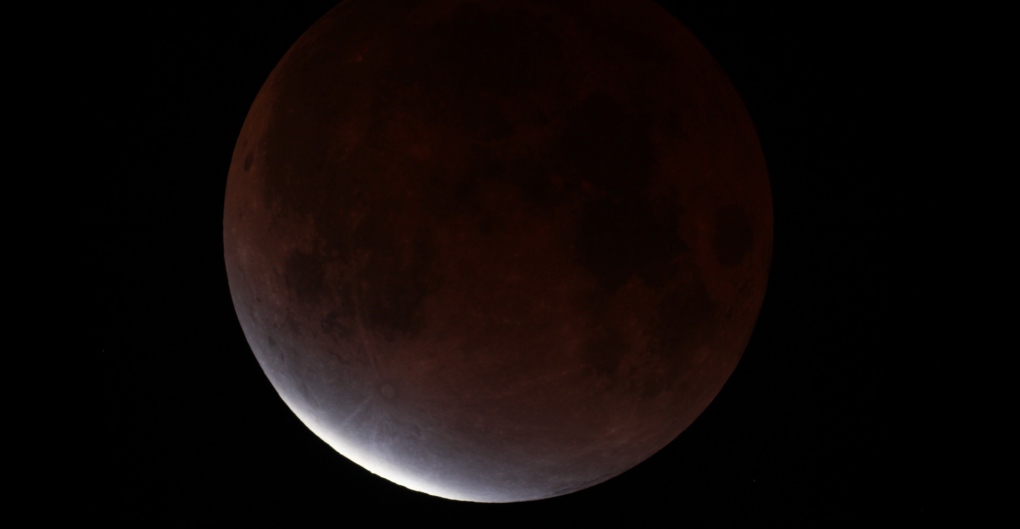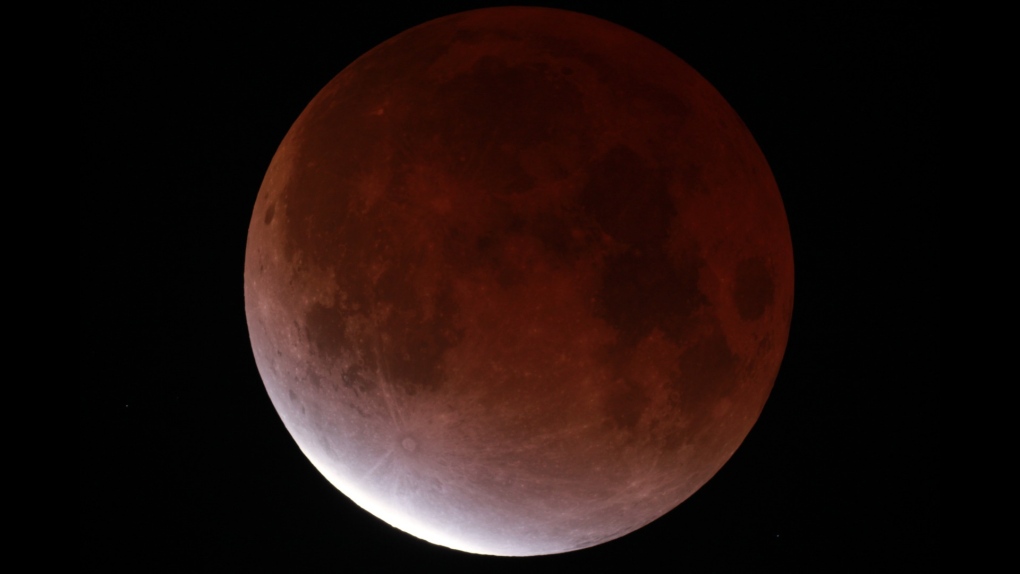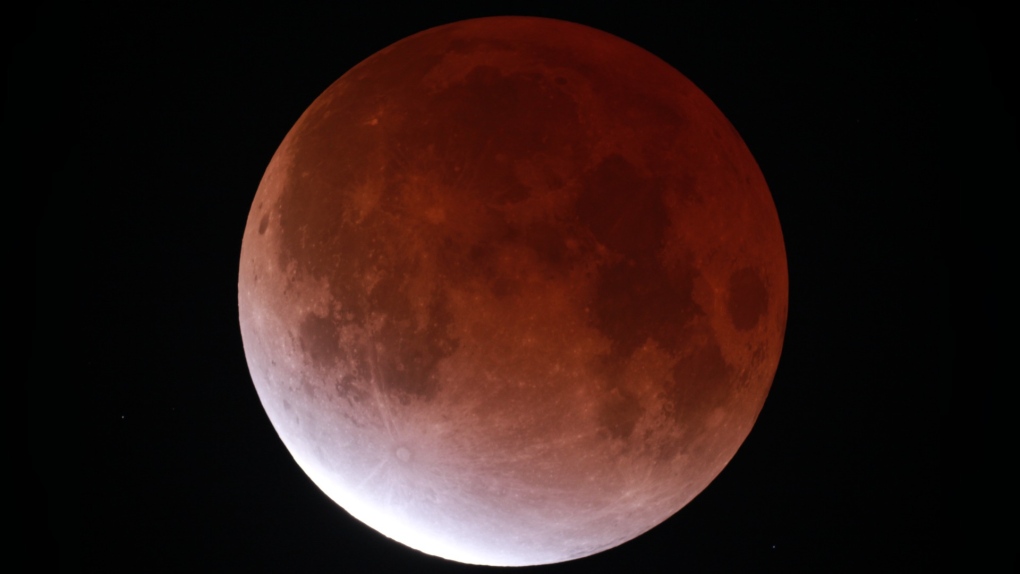What the Nov. 19 partial lunar eclipse looked like in Edmonton, Alta.
 The longest partial lunar eclipse in 580 years happened in the early hours of Nov. 19, 2021. (Courtesy: Frank Florian, TELUS World of Science Edmonton)
The longest partial lunar eclipse in 580 years happened in the early hours of Nov. 19, 2021. (Courtesy: Frank Florian, TELUS World of Science Edmonton)
The longest partial lunar eclipse in nearly 600 years happened early Friday morning.
The below images were taken at the RASC Observatory at TELUS World of Science Edmonton.
The moon passed through Earth's shadow between midnight and 3 a.m., with the peak occurring just after 2 a.m. MT.
 The longest partial lunar eclipse in 580 years happened in the early hours of Nov. 19, 2021. (Courtesy: Frank Florian, TELUS World of Science Edmonton)
The longest partial lunar eclipse in 580 years happened in the early hours of Nov. 19, 2021. (Courtesy: Frank Florian, TELUS World of Science Edmonton)
The more-than-three-hour event was the longest partial eclipse of this century and the longest in 580 years, according to NASA.
The space agency called it a "remarkably deep partial eclipse" as 97 per cent of the moon's diameter was expected to be covered by Earth's shadow.
 The longest partial lunar eclipse in 580 years happened in the early hours of Nov. 19, 2021. (Courtesy: Frank Florian, TELUS World of Science Edmonton)
The longest partial lunar eclipse in 580 years happened in the early hours of Nov. 19, 2021. (Courtesy: Frank Florian, TELUS World of Science Edmonton)
The eclipse should have been visible, pending weather, all over North America and the Pacific, as well as parts of South America, Australia and eastern Asia.
CTVNews.ca Top Stories

Joly, Blair condemn anti-NATO protest in Montreal that saw fires, smashed windows
Federal cabinet ministers condemned an anti-NATO protest in Montreal that turned violent on Friday, saying 'hatred and antisemitism' were on display.
Walking pneumonia is surging in Canada. Is it peaking now?
CTVNews.ca spoke with various medical experts to find out the latest situation with the typically mild walking pneumonia in their area and whether parents should be worried.
NEW Thinking about taking an 'adult gap year'? Here's what experts say you should know
Canadian employees are developing an appetite for an 'adult gap year': a meaningful break later in life to refocus, refresh and indulge in something outside their daily routine, according to experts.
Prime Minister Trudeau attends Taylor Swift's Eras Tour in Toronto with family
Prime Minister Justin Trudeau is a Swiftie. His office confirmed to CTV News Toronto that he and members of his family are attending the penultimate show of Taylor Swift's 'The Eras Tour' in Toronto on Friday evening.
Afraid of losing the U.S.-Canada trade pact, Mexico alters its laws and removes Chinese parts
Mexico has been taking a bashing lately for allegedly serving as a conduit for Chinese parts and products into North America, and officials here are afraid a re-elected Donald Trump or politically struggling Prime Minister Justin Trudeau could try to leave their country out of the U.S.-Mexico-Canada free trade agreement.
ICC warrants are binding, EU cannot pick and choose, EU's Borrell says
European Union governments cannot pick and choose whether to execute arrest warrants issued by the International Criminal Court against two Israeli leaders and a Hamas commander, the EU's foreign policy chief said on Saturday.
UN talks in disarray as a rough draft deal for climate cash is rejected by developing nations
As nerves frayed and the clock ticked, negotiators from rich and poor nations were huddled in one room Saturday during overtime United Nations climate talks to try to hash out an elusive deal on money for developing countries to curb and adapt to climate change.
'Her shoe got sucked into the escalator': Toronto family warns of potential risk of wearing Crocs
A Toronto family is speaking out after their 10-year-old daughter's Crocs got stuck in an escalator, ripping the entire toe area of the clog off.
The Thriftmas Special: The benefits of second-hand holiday shopping
The holidays may be a time for family, joy and togetherness, but they can also be hard on the wallet.


































